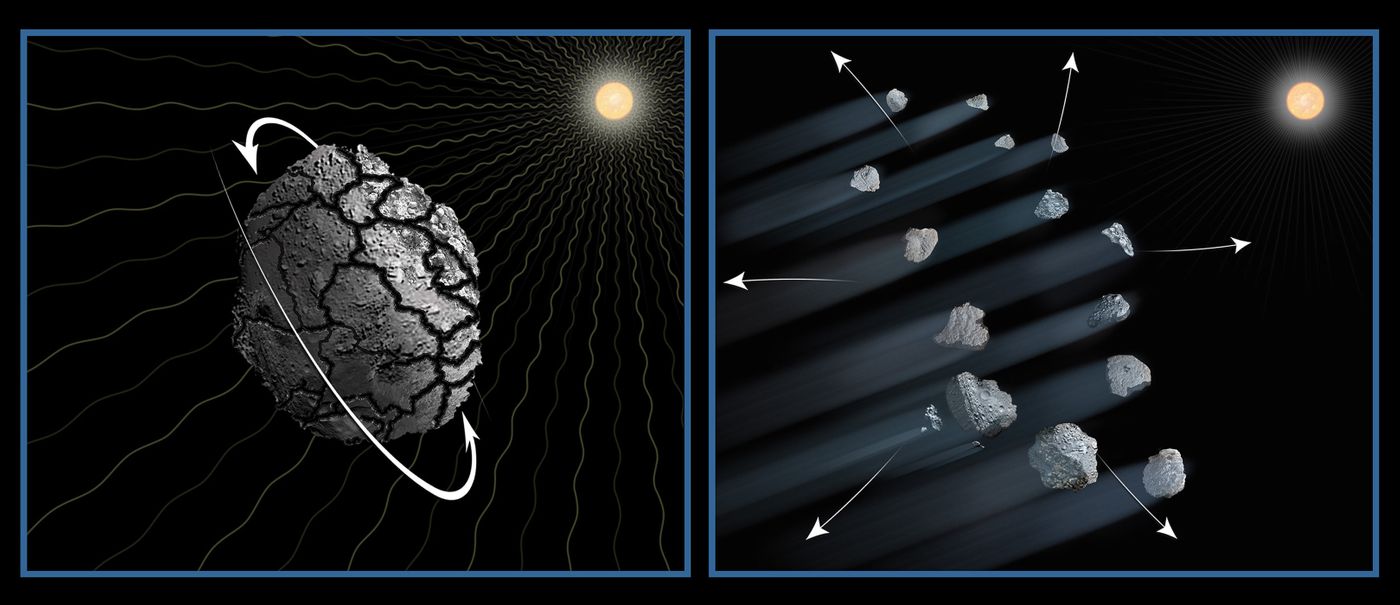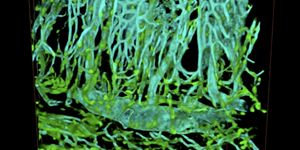The Curious Case of Why Asteroid P/2013 R3 Shattered Into Many Pieces
Astronomers have been studying the mysterious breakup of asteroid P/2013 R3 for over three years, and while the reasoning behind why it appeared to shatter from out of nowhere eluded experts for so long, we now think we know what happened.
Image Credit: NASA, ESA, and D. Jewitt (University of California, Los Angeles)
A study accepted for publication in the Astrophysical Journal offers a possible explanation for why P/2013 R3 shattered into more than 10 pieces before the eyes of the Hubble Space Telescope just years ago.
As noted in the study, the fragments were drifting apart from one another at a very low rate of speed, about 0.9 MPH, which virtually eliminates the idea that some kind of collision dealt a blow hard enough to shatter the space rock.
Related: Could asteroids have brought water to Earth?
Instead, experts turned their attention to a phenomenon known as the Yarkovsky-O'Keefe-Radzievskii-Paddack (YORP) effect. This is basically explained as when a source of heat causes an unstable object to start to spin, gradually gaining speed over time.
Image Credit: NASA, ESA, D. Jewitt (UCLA), and A. Feild (STScI)
In our Solar System, gravity helps keep everything glued together. On the other hand, everything is in free-spin and anything forced to spin by the YORP effect doesn’t meet any resistance. That said, as an unstable object spins, the spinning can only get faster as the source of heat continues to act on it.
The main source of heat in our Solar System is our Sun, and because asteroids are typically small and irregularly-shaped objects orbiting the Sun, they can be considered relatively easy targets for trapping pockets of heat from our host star.
In the case of P/2013 R3, which had an unstable structure to begin with, spinning too quickly may have eventually caused the loosely-packed, rubble-like internal structure of the asteroid to fling apart in all directions by means of centrifugal force.
“This indicates that the sun may play a large role in disintegrating these small solar system bodies, by putting pressure on them via sunlight,” study co-author Jessica Agarwal said.
Related: In terms of asteroid collision, size really does matter
When we think of space rocks, we probably think of solid objects like the rocks we’d find on the ground here on Earth, but not everything in space is as solidly-packed as what we find on the ground. Sometimes larger objects clump together through gravity and aren’t completely merged together.
This was likely the case of P/2013 R3, and the slow drift-away speed from the shattered asteroid bits seems to support the hypothesis that the YORP effect was the cause for the event.
While we don’t know for sure that this was the exact cause just yet, it’s a great starting point to begin our research. Nevertheless, you can observe the breakup of the asteroid and judge for yourself from the following HubbleESA video on YouTube:
Source: Space.com










